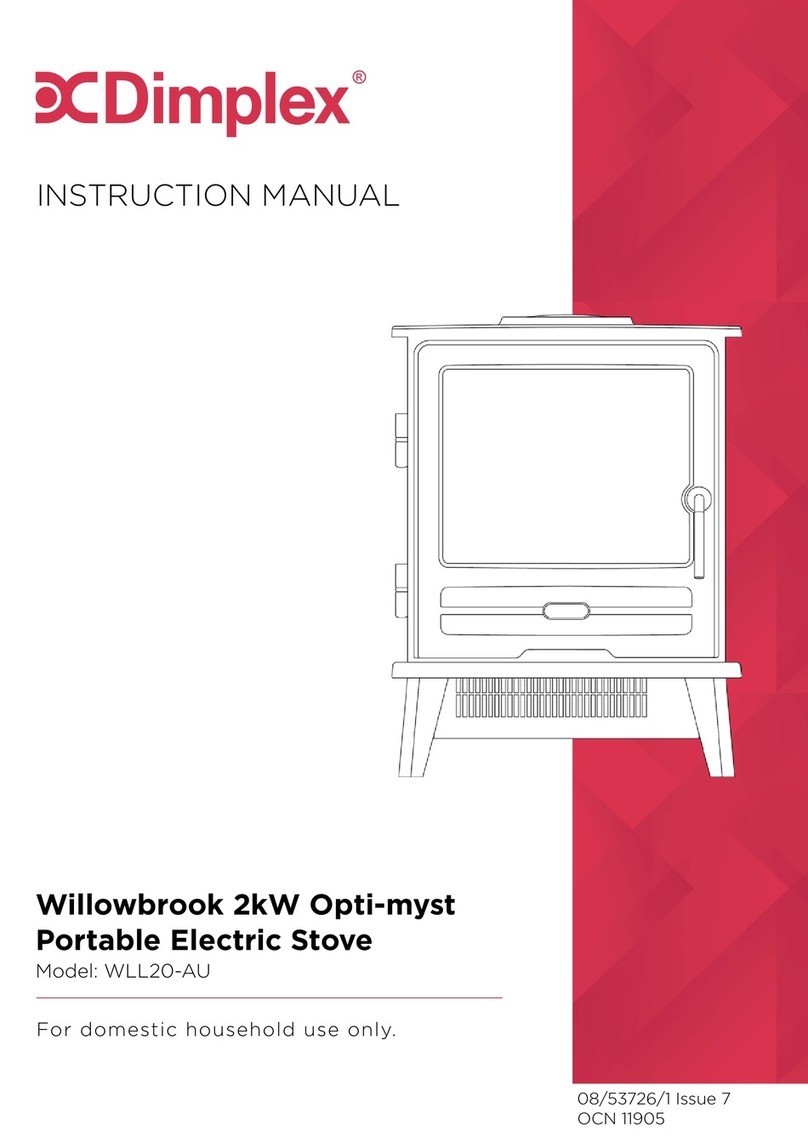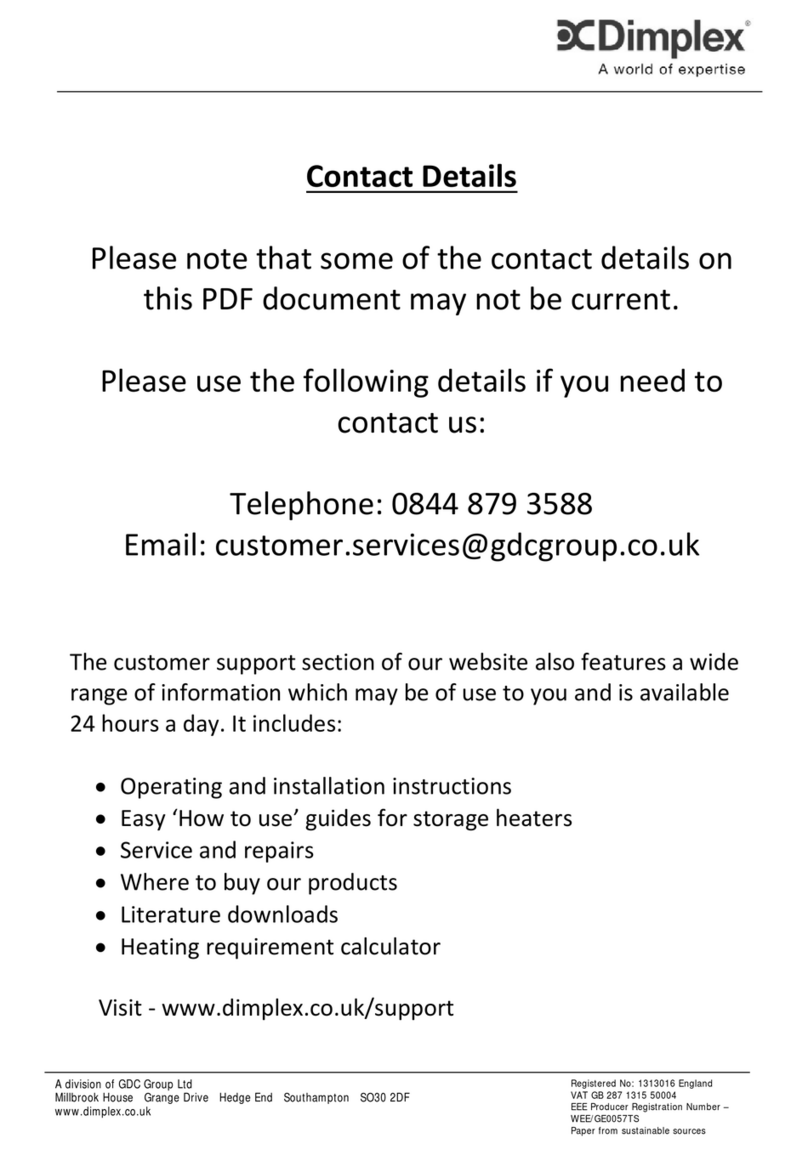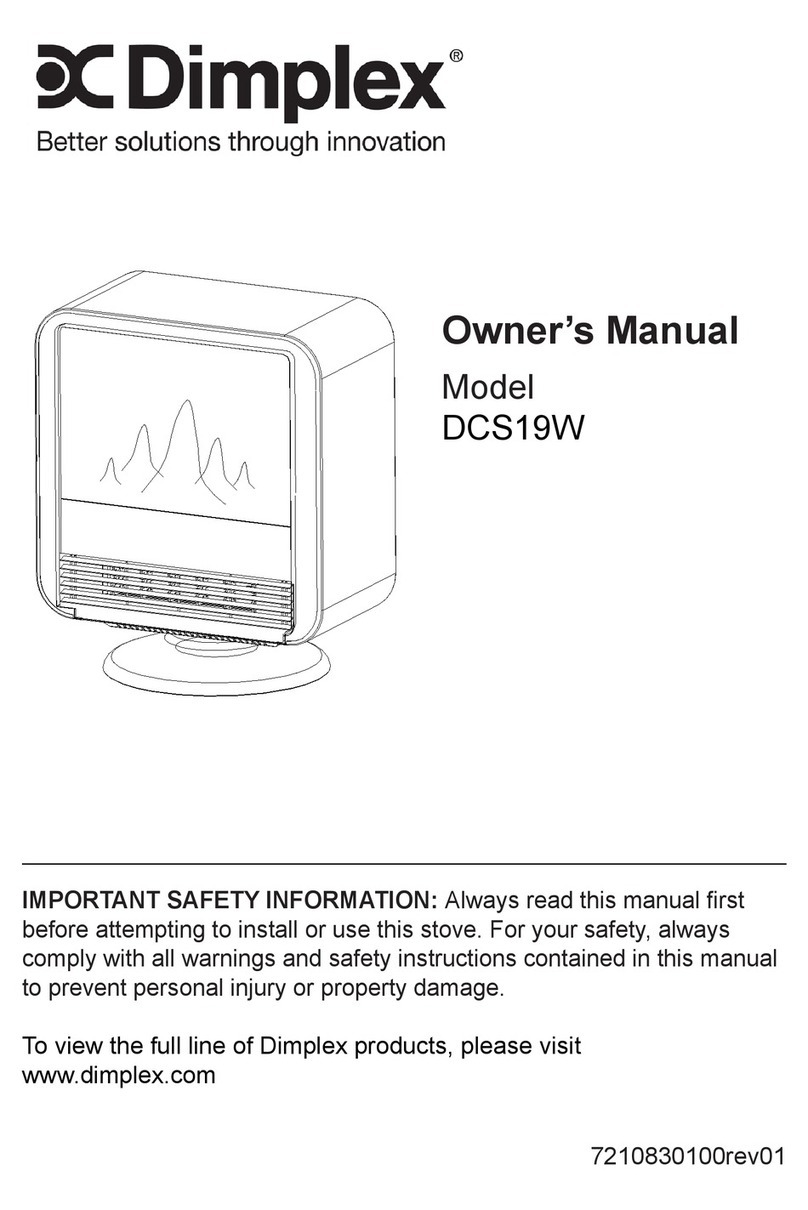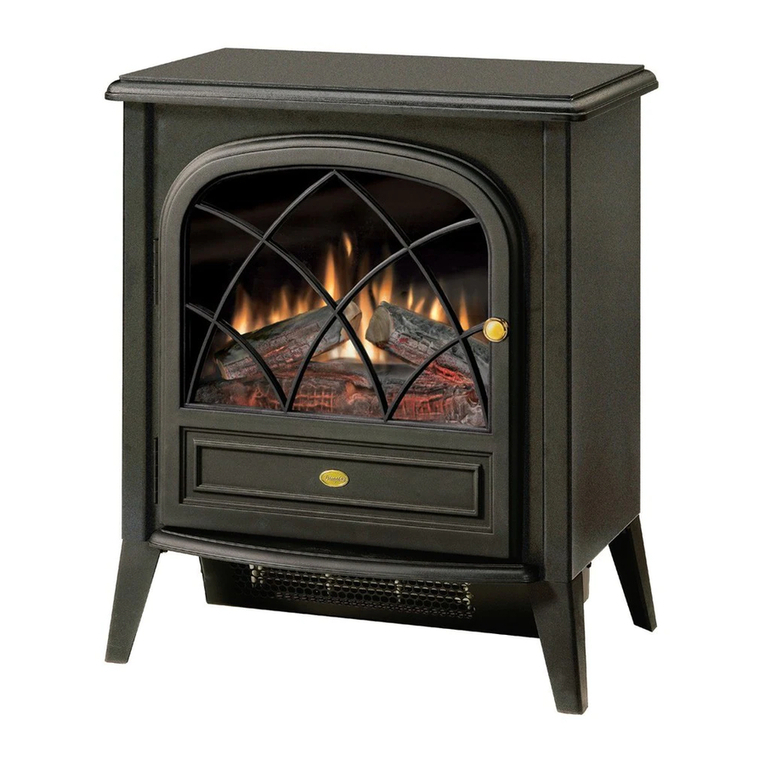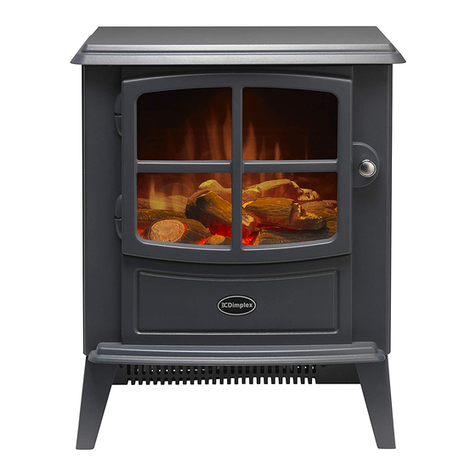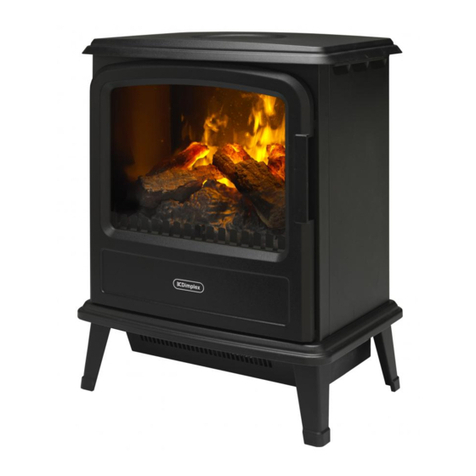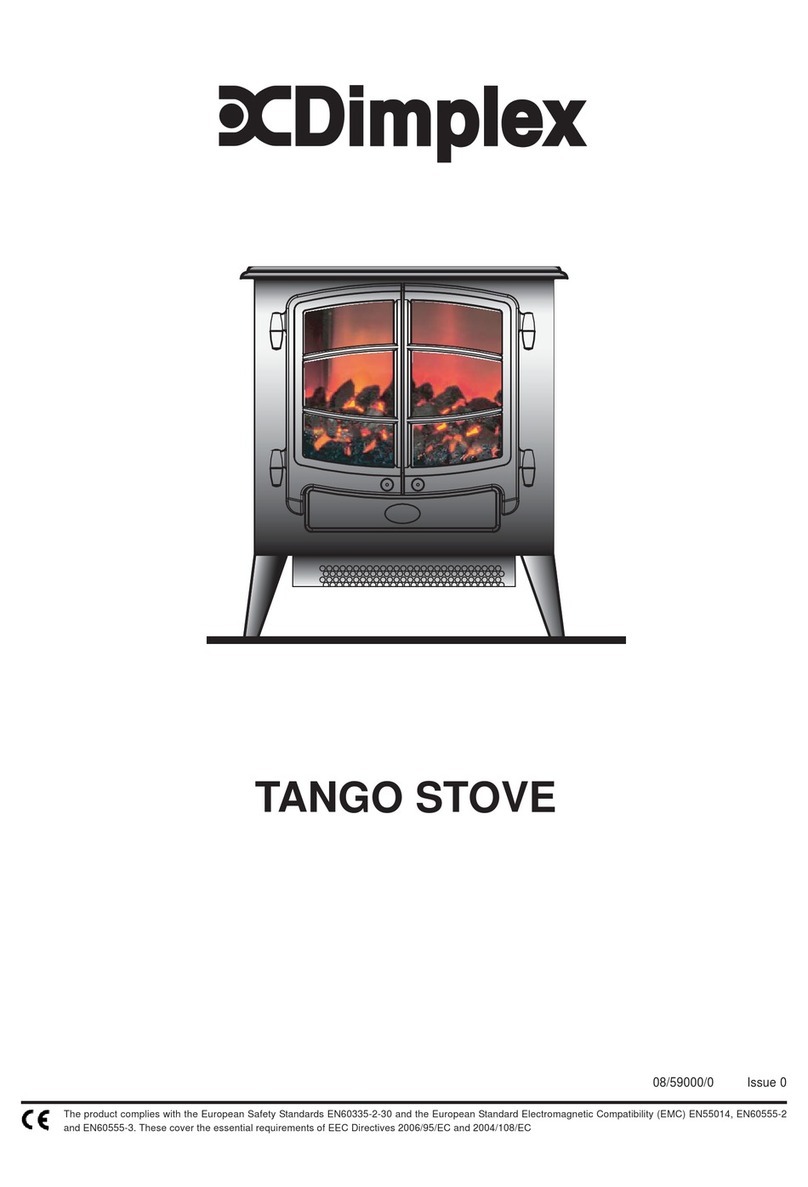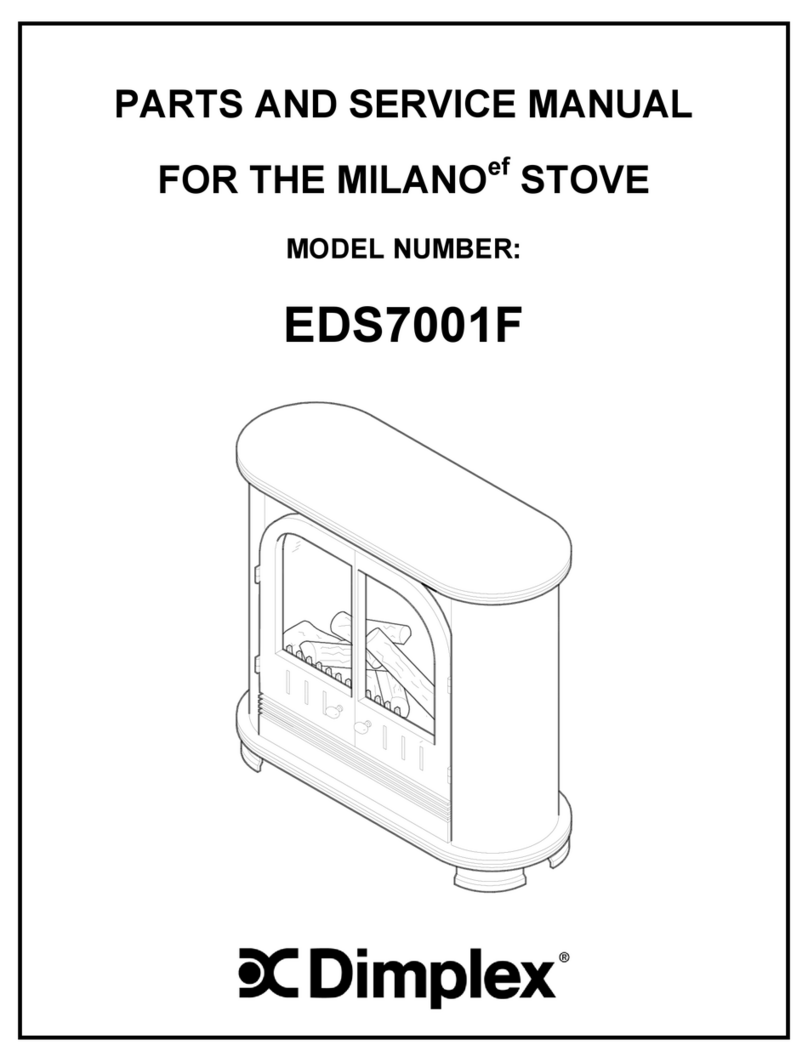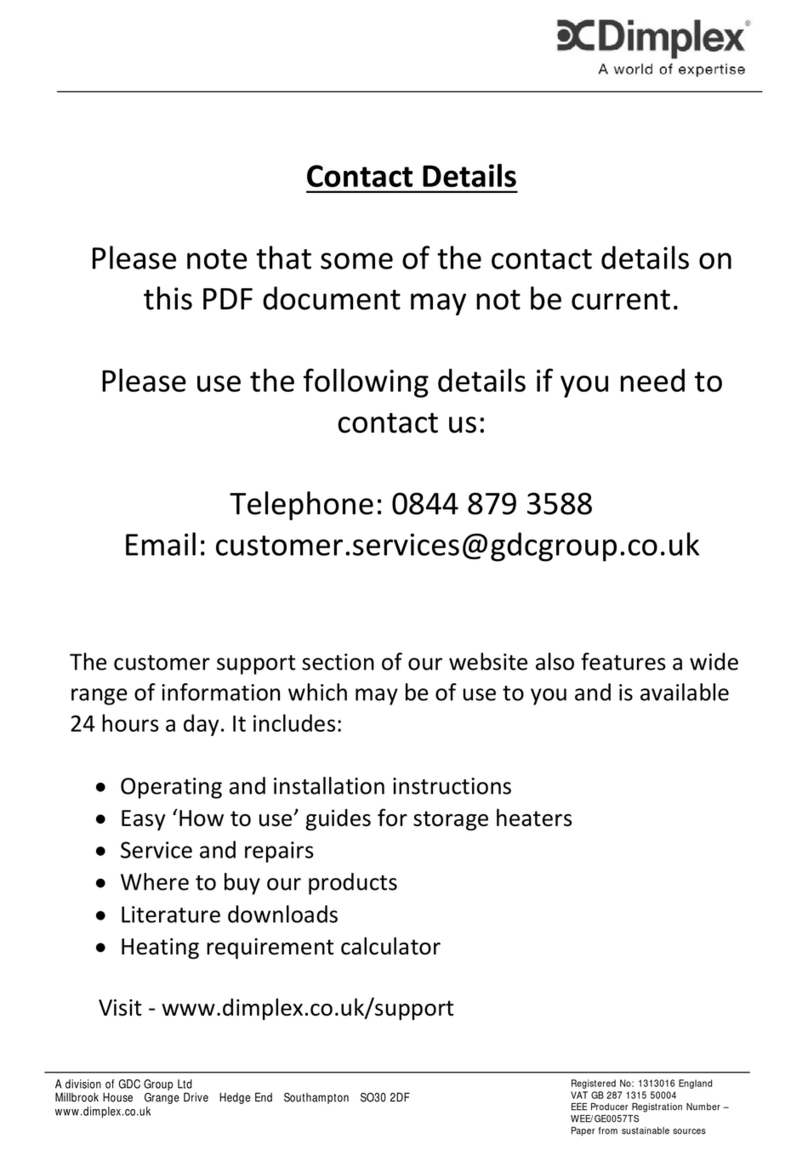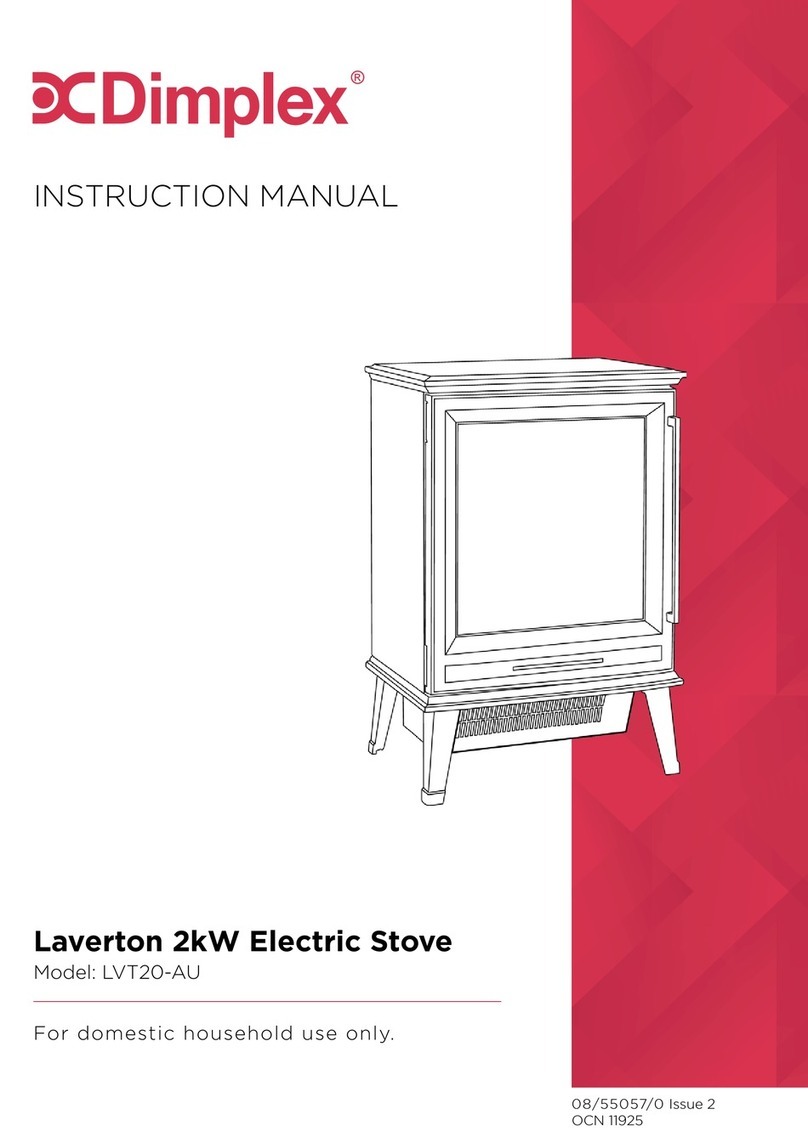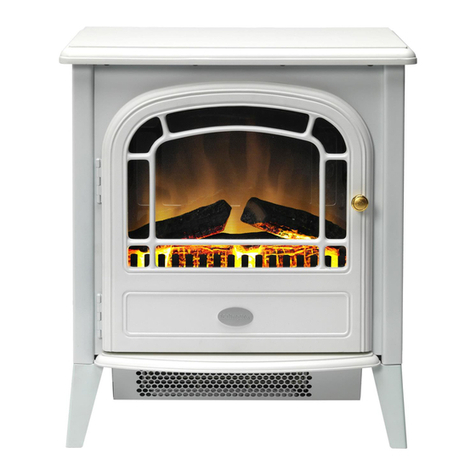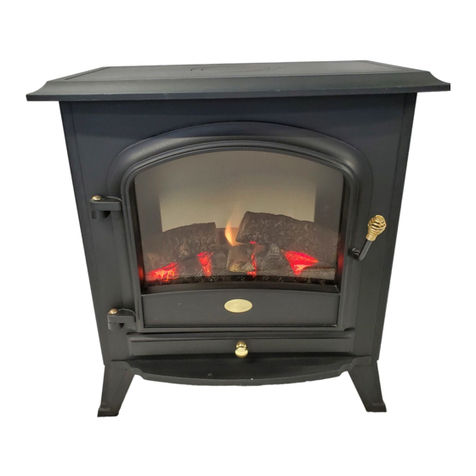Flue Deposits
If the chimney was previously used as an open re, it is possible
that the higher ue gas temperatures generated by the stove may
loosen deposits that were previously adhered to the inner surface
of the ue pipe which could cause a blockage. We recommend
that in this situation a second sweeping of the chimney should be
carried out within one month of initial stove use after installation.
Stove Assembly
Remove the straps and lift off the upper box 1. (Fig 3).
Remove the plastic bag, Open the stove door and remove all 2.
the contents including the xing bar (Fig 4).
Carefully tip the stove onto its back and remove the M8 screw 3.
using a 14mm spanner (Fig 5).
Secure the xing bar using the hinge pins and after feeding 4.
the tightening bar through the xing bar, add the washers and
wingnut onto the end (1 & 2, Fig 6).
Open the sealing kit supplied and glue sealing rope into the5.
channel on rear edge of appliance (3, Fig 7). Use suitable
protective gloves when handling glue to prevent contact. In
case of contact, wash immediately with plenty of water.
Remove the grate and the bafe plate 6. (4 & 5, Fig 8). Place the
inset stove into position in the replace and mark the intended
position of the xing screw through the hole in the bottom of
the appliance (6, Fig 8). Remove the stove and drill a hole
then insert the rawl plug supplied. Re-position the stove and
screw into place.
Create a seal with the fascia of the replace making sure 7.
the rope seal comes into contact with the fascia. Place
hand through the stove collar and tighten the wingnut on
the tightening bar (7, Fig 7). The xing bar creates pressure
when it contacts the chimney/lintel. The stove should be tightly
sealed to the replace fascia.
Room Ventilation
For safe operation this stove must be provided with combustion
air supply in addition to normal room ventilation, in accordance
with Building Regulations. Minimum ventilation requirements vary
depending on whether the dwelling is considered to be of standard
construction or of airtight construction, or if a ue draught stabiliser
has been tted. The required open air vent sizes are as follows:
Standard build dwellings {air permeability >5.0m³ /(h.m²)}
No Flue Stabiliser No additional vent required
With Flue Stabiliser 13 cm²
Airtight build dwellings {air permeability ≤5.0m³ /(h.m²)}
No Flue Stabiliser 24 cm²
With Flue Stabiliser 37 cm²
Flue Draught
The chimney should be checked before the stove is installed to
ensure that there is adequate ue pull. The draught can be checked
initially by using a smoke match close to the ue opening. If the
chimney doesn’t pull the smoke it may suggest that the chimney
needs further attention. Any remedial work to the chimney ue
should be carried out by a suitably Qualied Engineer.
A ue draught of minimum 12 Pascal to maximum 25 Pascal is
required for satisfactory appliance performance. The ue draught
should be checked under re at high output and if it exceeds the
recommended maximum a ue draught stabiliser (or ue damper
as it is also known) must be tted so the rate of burning can be
controlled and prevent overring.
An extractor fan must not be used in the same room as this
appliance.
UK
- 2 -
Flue Damper/Draught Stabiliser (Not Supplied)
A ue damper may be tted to reduce the draught through the
stove if the draught is too high. When the damper is set in the
open position the chimney draws at full draught, increasing the
volume of air ow through the stove and ue. Shutting the damper
restricts the ow, slowing the rate of burning.
The damper should be tted to the stove ue and should be the
same size as the ue pipe. As a rule it should be tted no closer
than 700mm from the ue outlet of the appliance.
A ue damper should not be tted when burning fuels other
than wood.
Floor Protection & Installation Clearances
In all instances the stove should be positioned on a non-combustible
hearth and located in a suitable solid fuel replace recess. The
construction of the hearth and replace recess must conform to
Building Regulations, must be rm, made from non-combustible
materials and capable of supporting the stove. Care should be
taken to ensure the stove is level and the hearth is secure. The
hearth itself should not be less than 125mm thick, including the
thickness of the oor and any decorative top surface (e.g. tiling).
Allow an apron of at least 225mm at the front of the stove in case
of spills when de-ashing and 150mm on either side (Fig 9 & 10).
All walls adjacent to the hearth should be made from solid non
combustible material and be made with minimum thickness as
follows:
Appliance distance
X from wall
Min WallThickness
Y
Min solid wall height
300mm above the
appliance and 1.2m
above the hearth
less than 50mm 200mm
50mm and over 75mm
The minimum safe distances to combustable materials that
must be observed is 275mm to sides/front, 295mm to top.
Any surrounding combustible material should not exceed 80°C.
Commissioning
Upon completion of installation, allow a suitable period of time for
any re cement or mortar to dry out. The stove and ue system
should then be tested by a suitably qualied person to make sure
it is safe for normal use. A smoke draw test should be completed
to check for soundness of joints and seals and also that all smoke
and fumes are taken from the appliance up the chimney and
emitted safely.
First warm the ue with a blowlamp or similar for about 10 minutes.
Place a lit smoke pellet on the centre of the grate with the air
controls open. Close the door – the smoke should be drawn up the
ue and be seen to exit from the ue terminal. Complete the test
with all windows and doors shut in the room where the appliance
is tted. If a ceiling fan is present it must be operated on max for
the duration of the test. If there are any extraction fans in adjacent
rooms these too must be operated on maximum setting during the
test with the interconnecting doors open. If any spillage occurs,
recheck the suitability of the ue system making sure there is
adequate air supply to the room (as per Building Regulations).
Light the appliance and slowly increase the temperature to medium
operating levels. The stove should not be run at full output for the
rst 3-4 burn cycles. Open the main re door when the appliance
reaches normal operating condition and carry out a spillage test
using a smoke match or pellet around the door opening. If any
spillage occurs, open all windows, allow the re to go out and
recheck the ue system and ventilation.
